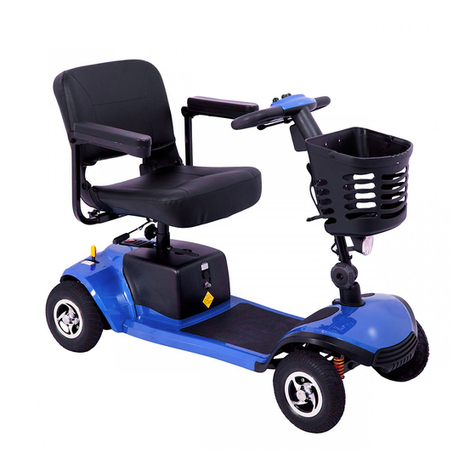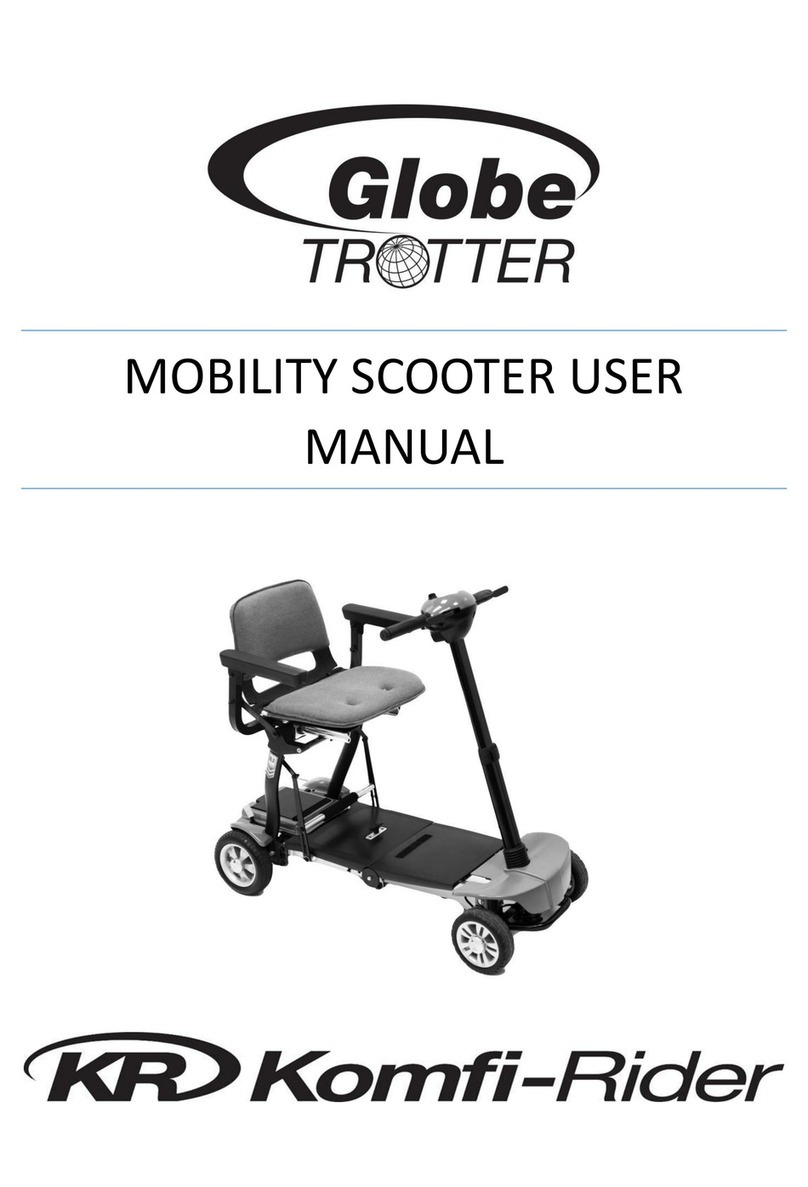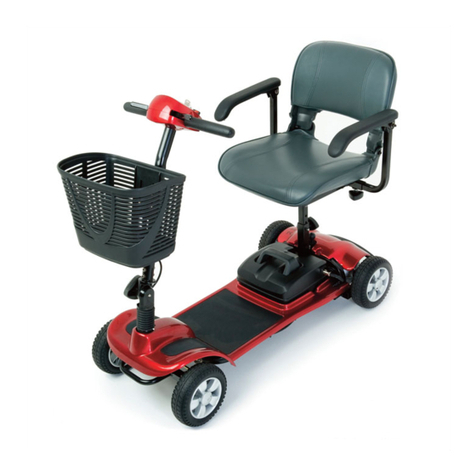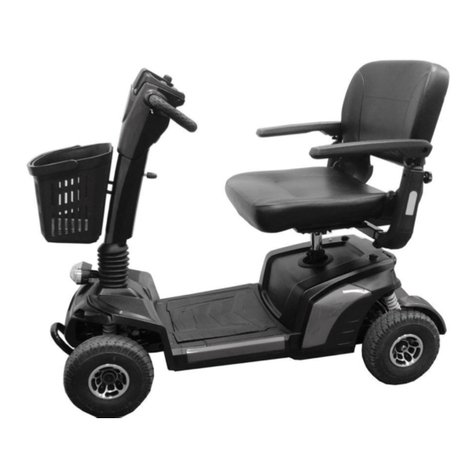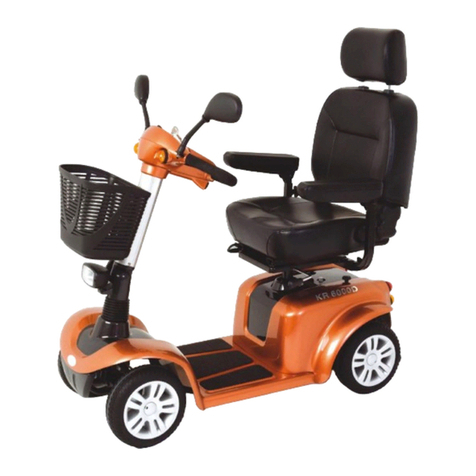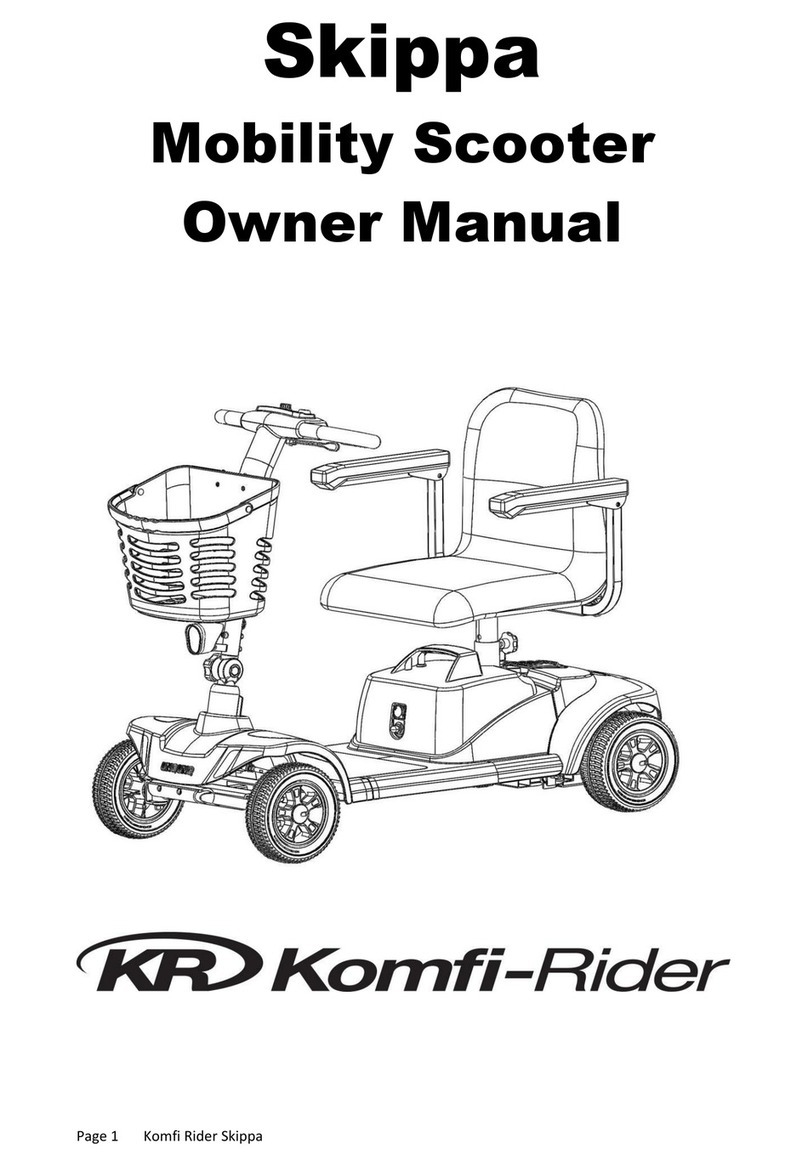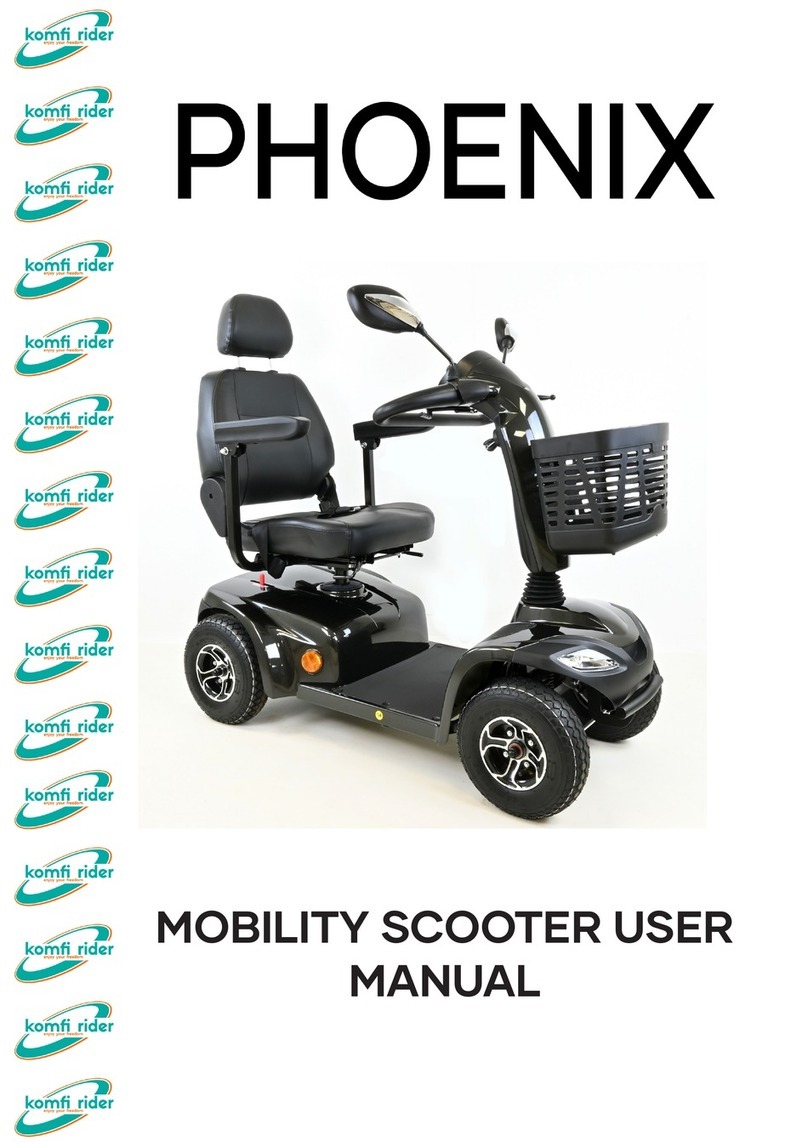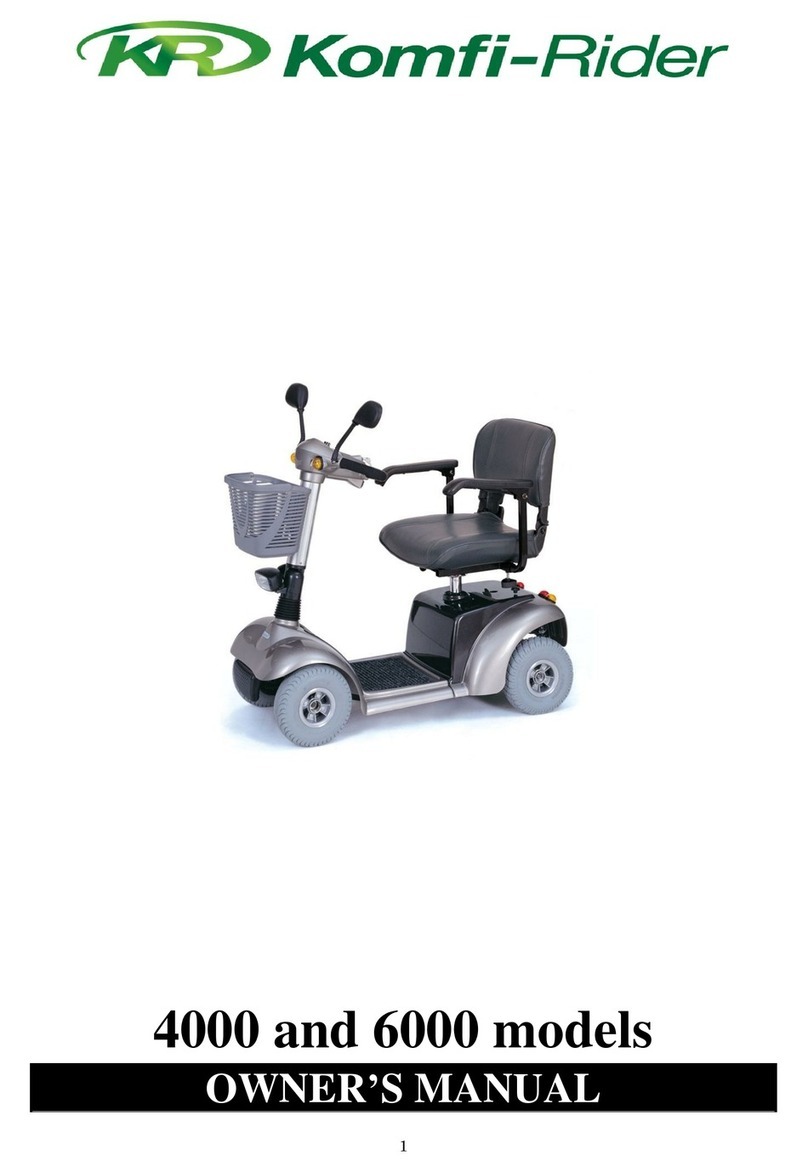7
5.5 Throttle Control Lever –Forward/Back: (23)
This lever allows you to control the forward speed and the reverse speed of your scooter up to the
maximum speed you pre-set with the speed adjustment dial.
Place your right hand on the right hand tiller handle and your left hand on the left hand tiller
handle.
To move forward, use either of the following:
Use your left thumb to push the left side of the throttle control lever.
Use your right hand fingers to pull back on the right side of the throttle control lever.
To move backward, use either of the following:
Use your right thumb to push the right side of the throttle control lever.
Use your left hand fingers to pull back on the left side of the throttle control lever.
Release the lever and allow your scooter to come to a complete stop before pushing the other side of
the lever to move in reverse. When the scooter is moving in reverse, the reverse beeper will sound.
When the throttle is completely released, it automatically returns to the centre “stop” position and
engages your scooter’s brakes.
5.6 Charger Socket –Tiller: (24)
The Tiller Charger Socket allow the batteries to be charged without having to bend down and charge
from the battery box charging socket –see ‘11.0 Batteries and Charging’ for further information.
WARNING! Chargers are selected precisely for particular applications and are especially
matched to the type, size, and chemical formulation of specific batteries. For the safest and most
efficient charging of your scooter’s batteries, we recommend use of the charger supplied as original
equipment with your product only. Any charging method resulting in batteries being charged
individually is especially prohibited.
WARNING! Do not attempt to disassemble the battery from the battery pack or refit the
battery.
WARNING! If your battery charger has not been tested and approved for outdoor use,
then do not expose it to adverse or extreme weather conditions. If the battery charger is exposed to
adverse or extreme weather conditions, then it must be allowed to adjust to the difference in
environmental conditions before use indoors. Refer to the manual supplied with the battery charger
for more information.
